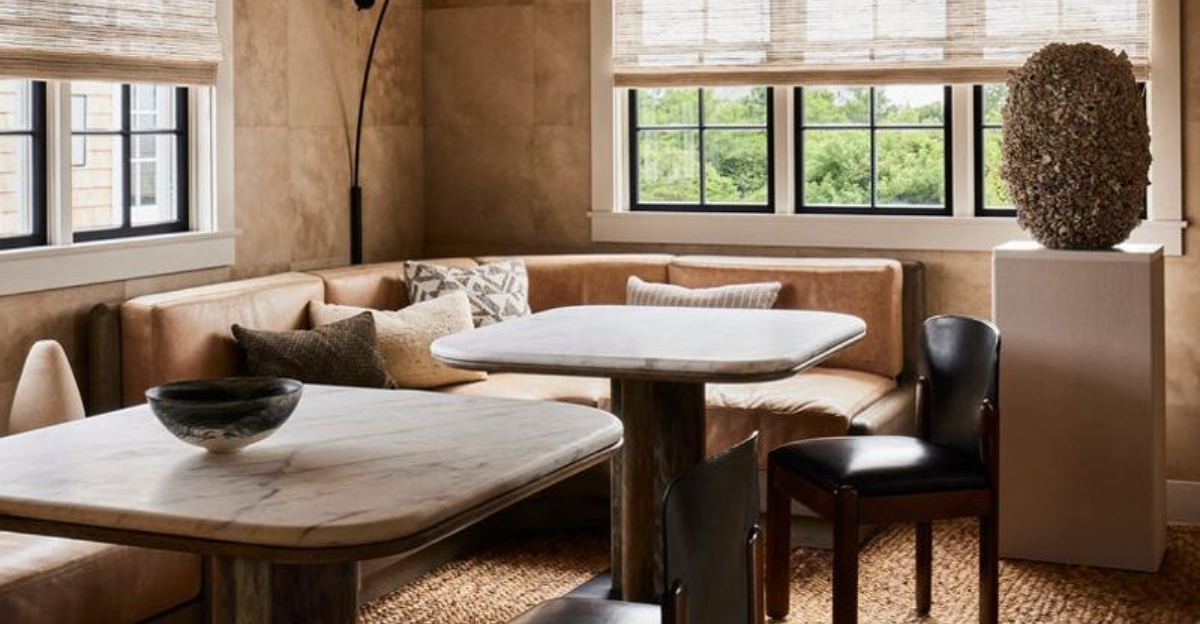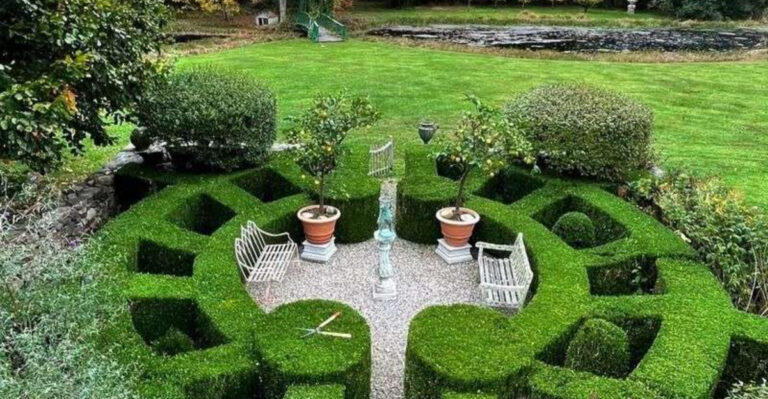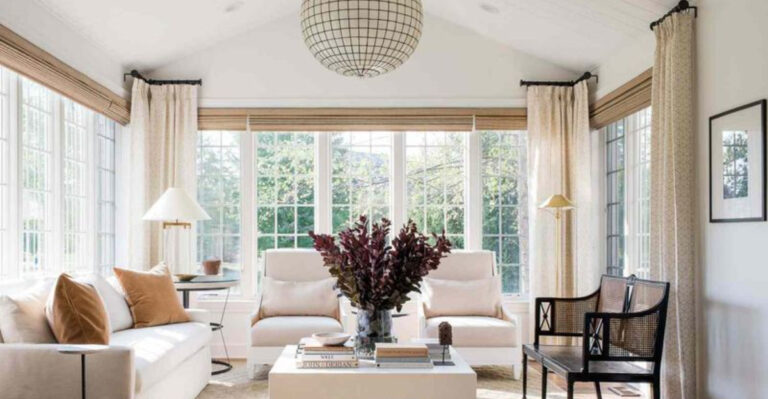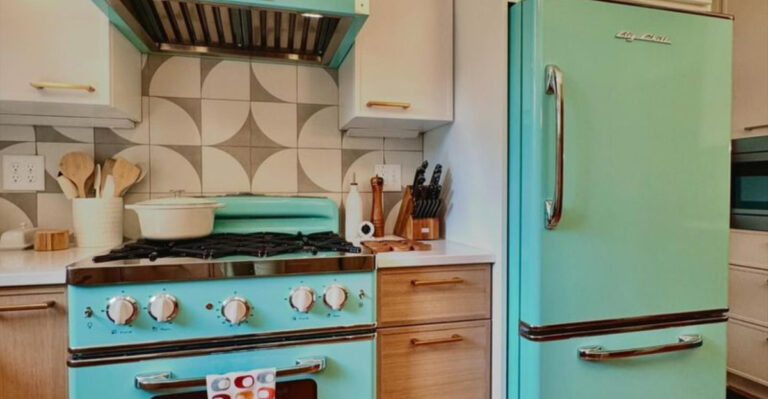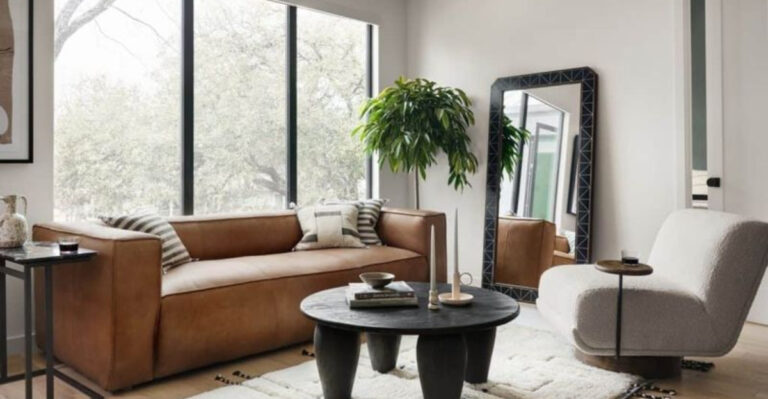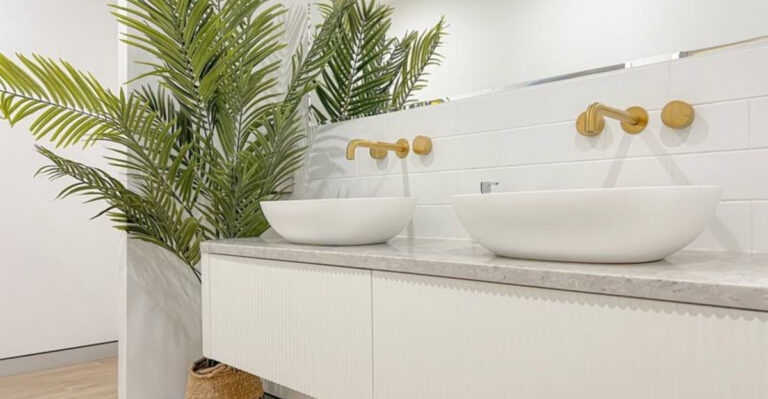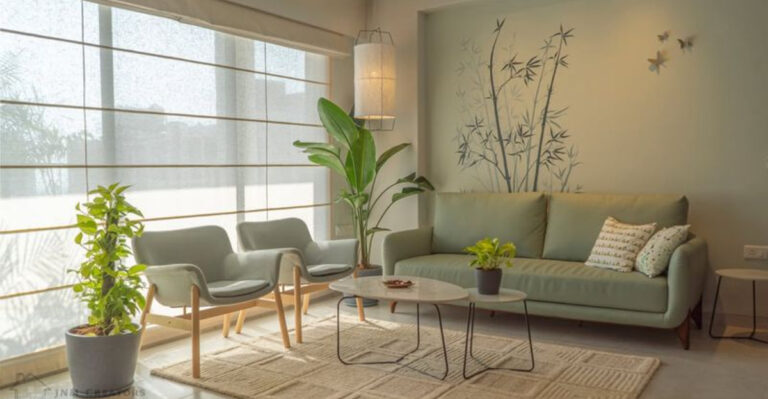15 Dining Room Features You Can Never Go Wrong With According To Designers (Plus 5 Of Their Secret Tips)
Designing a dining room from scratch can feel like a total guessing game, I’ve definitely been there, overwhelmed by too many options and unsure what actually works.
That’s why I started paying attention to what interior designers consistently recommend. Turns out, there are a few key features that show up again and again, no matter the style of the home. These aren’t just pretty, they’re practical, comfortable, and built to last.
Whether you’re giving your space a full makeover or just want to make it feel more inviting, these designer-approved ideas are a great place to start. They made all the difference for me.
1. Statement Lighting Fixture
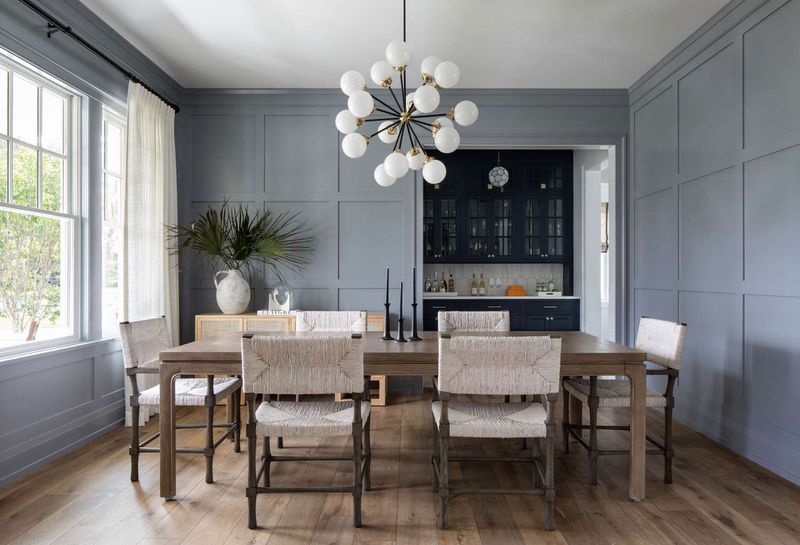
Nothing transforms a dining space quite like the right overhead fixture. Chandeliers, pendant lights, or artistic installations become instant conversation starters while providing essential task lighting.
Size matters here more than you’d think. Your fixture should be roughly one-third the width of your dining table for perfect proportions.
Consider dimmable options to shift from bright family dinners to romantic evening meals effortlessly.
2. Round Dining Table

Circles encourage conversation like no other shape can. Round tables eliminate the awkward head-of-table hierarchy and make everyone feel equally included in dinner discussions.
They’re also space-savers in smaller rooms, allowing better traffic flow around the perimeter. No sharp corners means safer navigation too, especially with little ones running around.
Plus, you can squeeze in an extra guest more easily when needed.
3. Built-In Storage Solutions

Smart storage keeps your dining room clutter-free and party-ready at all times. Built-in buffets, china cabinets, or window seat storage blend seamlessly with your room’s architecture.
These custom solutions maximize every inch while hiding everyday dining essentials. From extra linens to seasonal serving pieces, everything has its designated home.
The result? A space that always looks magazine-worthy, even on busy weeknights.
4. Natural Wood Elements

Wood brings warmth and character that synthetic materials simply can’t match. Whether it’s a reclaimed farmhouse table or walnut floating shelves, natural grain adds instant personality.
Different wood tones can coexist beautifully when you vary the finishes and textures. Light oak pairs surprisingly well with darker cherry or mahogany accents.
The organic feel helps balance harder surfaces like stone or metal throughout your space.
5. Large Area Rug
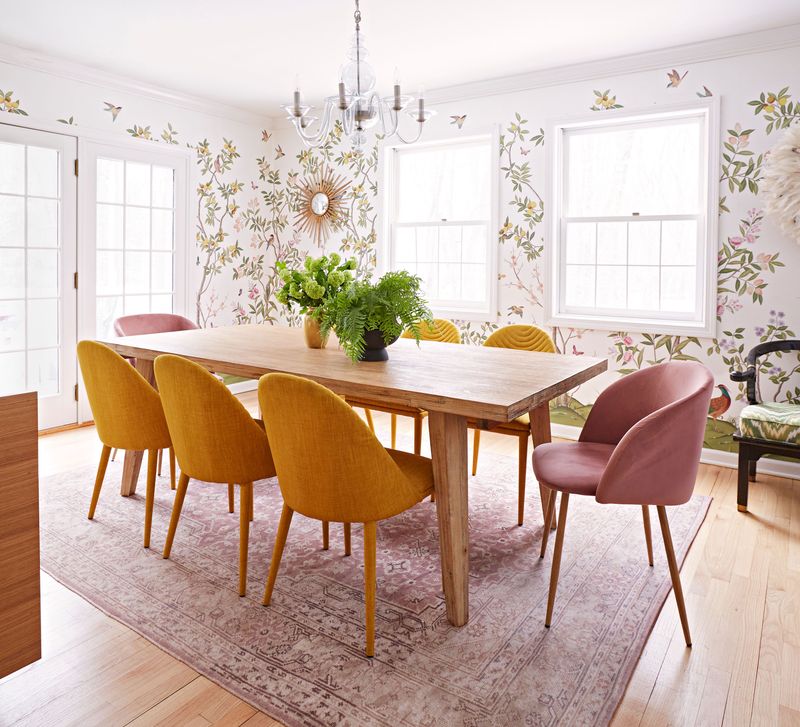
A well-sized rug anchors your dining set and defines the eating area within larger open floor plans. The key is choosing one large enough that all chair legs remain on the rug, even when pulled out.
This prevents that annoying wobble when chairs catch the rug’s edge during meals. Patterns can hide inevitable spills and crumbs better than solid colors.
Think of it as your dining room’s foundation piece.
6. Gallery Wall Display

Art transforms blank walls into personal storytelling spaces that reflect your family’s interests and travels. Mix frame sizes, artwork styles, and even some three-dimensional pieces for visual interest.
Gallery walls work especially well behind buffets or along longer walls where single pieces might look lost. The key is planning your layout on the floor first.
This prevents multiple nail holes and ensures balanced spacing throughout your display.
7. Comfortable Upholstered Chairs
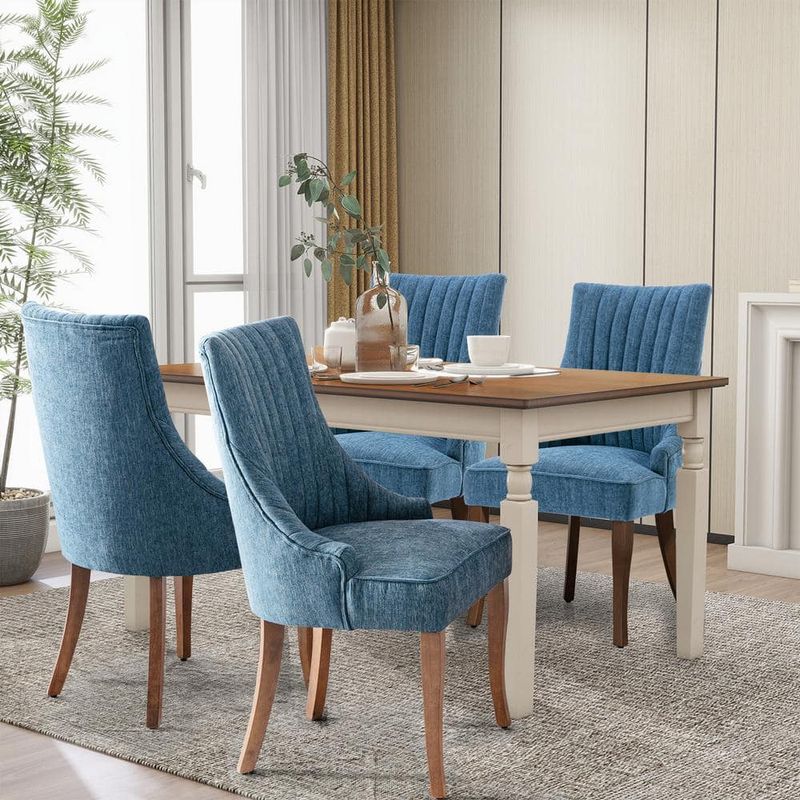
Comfort encourages lingering, which is exactly what you want during family meals and dinner parties. Upholstered seats and backs make even lengthy conversations feel pleasant.
Choose performance fabrics that resist stains and clean easily, especially if you have kids or entertain frequently. Darker patterns camouflage minor spills between professional cleanings.
Your guests will unconsciously relax more when they’re physically comfortable, creating better dinner experiences overall.
8. Window Treatments

Windows need dressing to feel finished, and the right treatments control both light and privacy during meals. Layered options like blinds with curtains offer maximum flexibility.
Consider the time of day you dine most often. Morning breakfast nooks benefit from light-filtering options, while evening dining rooms can handle heavier fabrics.
Don’t forget about outside views when choosing opacity levels and mounting heights for your window coverings.
9. Sideboard Or Buffet
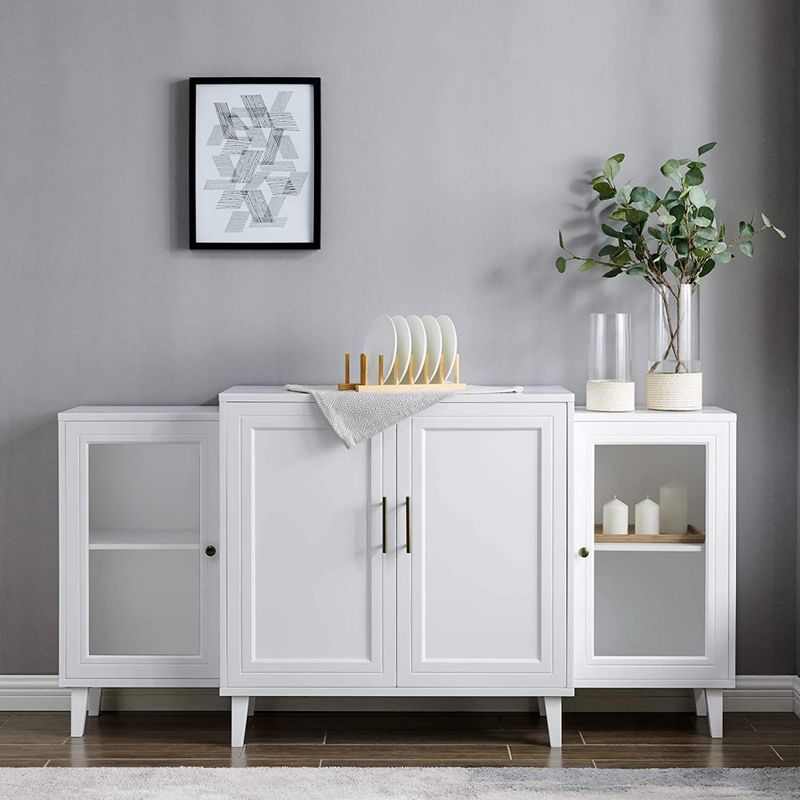
Every dining room needs a staging area for serving dishes, and sideboards provide both storage and surface space for entertaining. They’re perfect for keeping serving pieces within reach but out of the way.
Modern versions often include wine storage, electrical outlets for warming trays, and adjustable shelving inside. The top surface becomes prime real estate for decorative displays between meals.
Think of it as your dining room’s command center.
10. Layered Lighting Plan
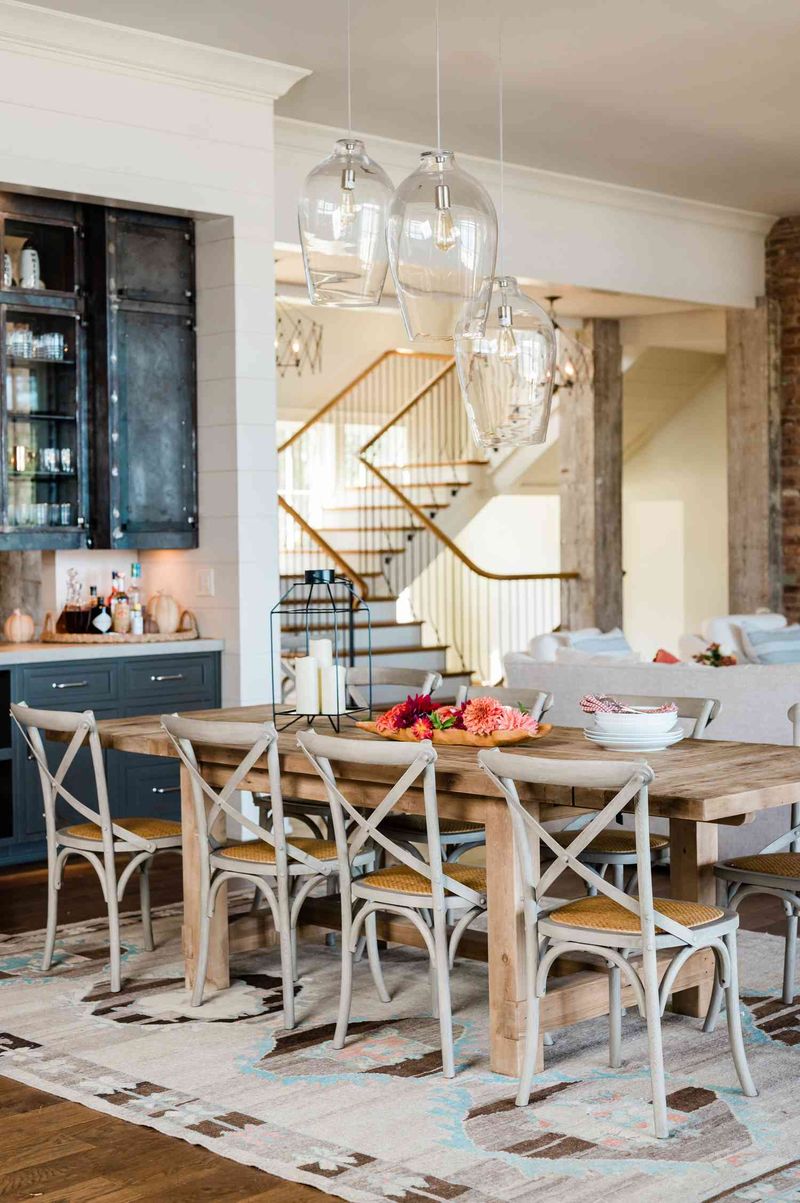
One overhead light rarely creates the ambiance you want for different dining occasions. Successful rooms combine ambient, task, and accent lighting for maximum flexibility.
Table lamps on the sideboard, wall sconces, or even candles add warmth that harsh ceiling fixtures alone can’t provide. Each light source should have its own switch or dimmer control.
This allows you to customize the mood for everything from homework sessions to romantic dinners.
11. Fresh Flowers Or Plants
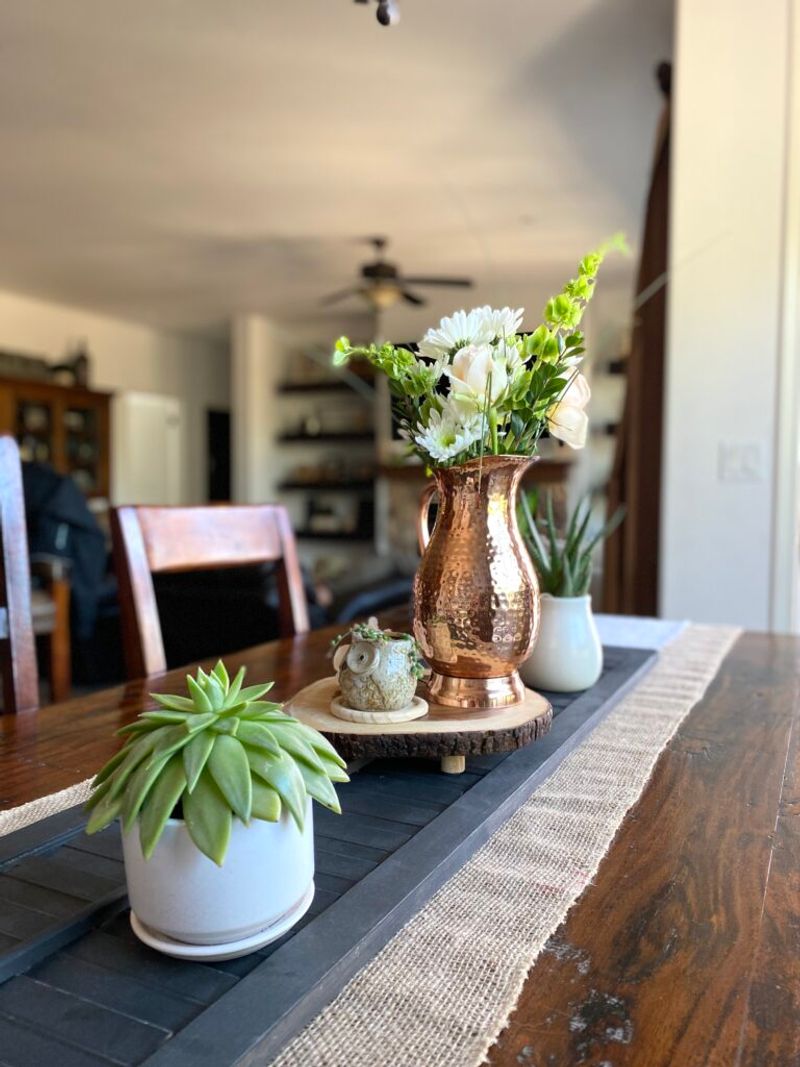
Living elements bring energy and color that artificial decorations simply can’t replicate. Fresh flowers create instant centerpieces that change with seasons and personal preferences.
Low-maintenance plants like pothos or snake plants thrive in dining rooms and improve air quality during meals. Just avoid anything too fragrant that might compete with food aromas.
The natural movement and organic shapes soften harder architectural lines throughout your space beautifully.
12. Neutral Color Palette
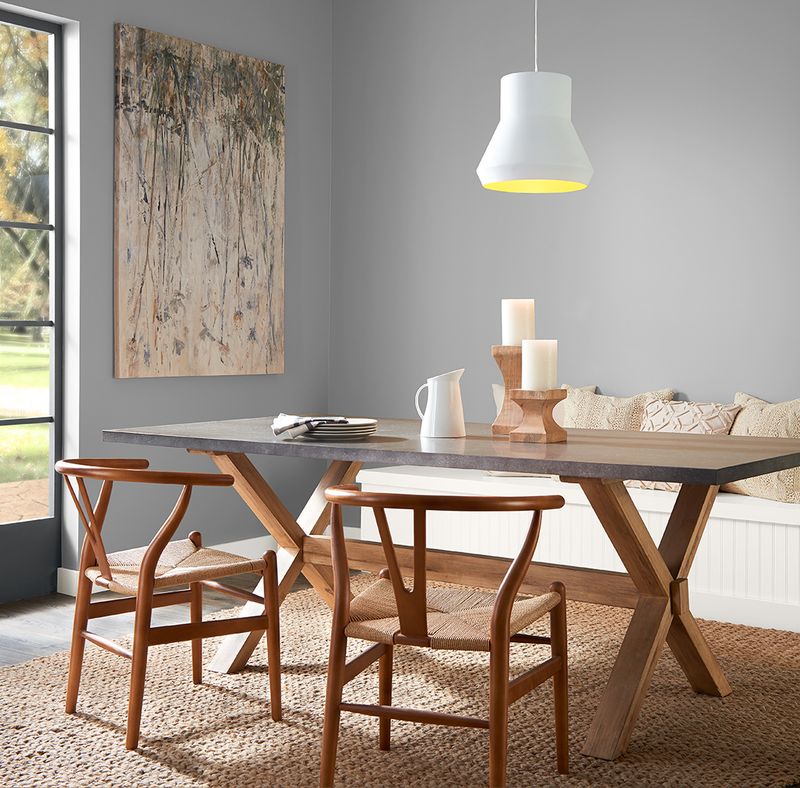
Neutral backgrounds never go out of style and provide flexibility for changing seasonal decorations or personal tastes over time. Beiges, grays, and whites create calming environments that enhance rather than compete with food presentation.
These colors also photograph beautifully for social media sharing of special meals and gatherings. You can always add personality through artwork, textiles, and accessories.
The timeless appeal means your dining room won’t look dated in family photos years from now.
13. Mirror Placement
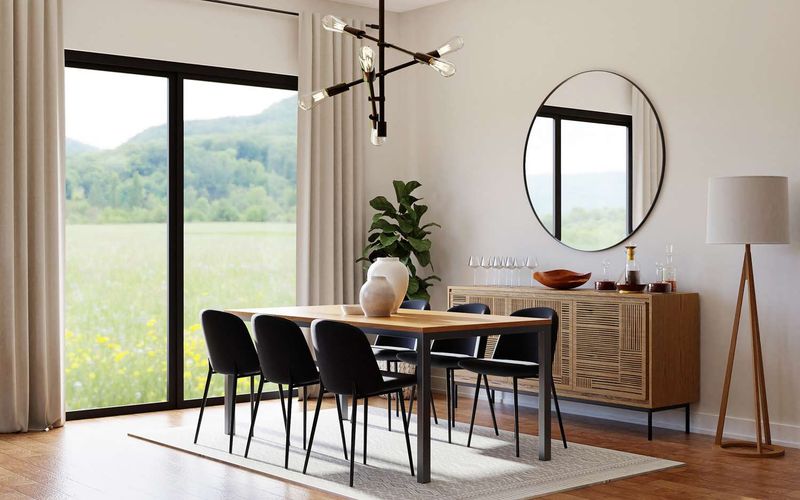
Mirrors multiply light sources and create the illusion of expanded space, making even compact dining areas feel more open and airy. Strategic placement opposite windows maximizes natural light throughout the day.
Large mirrors also serve as stunning focal points that don’t require ongoing maintenance like artwork might. They reflect your beautiful table settings back into the room during special occasions.
Just avoid placing them where they’ll reflect messy kitchen areas or unflattering angles of seated diners.
14. Quality Table Linens
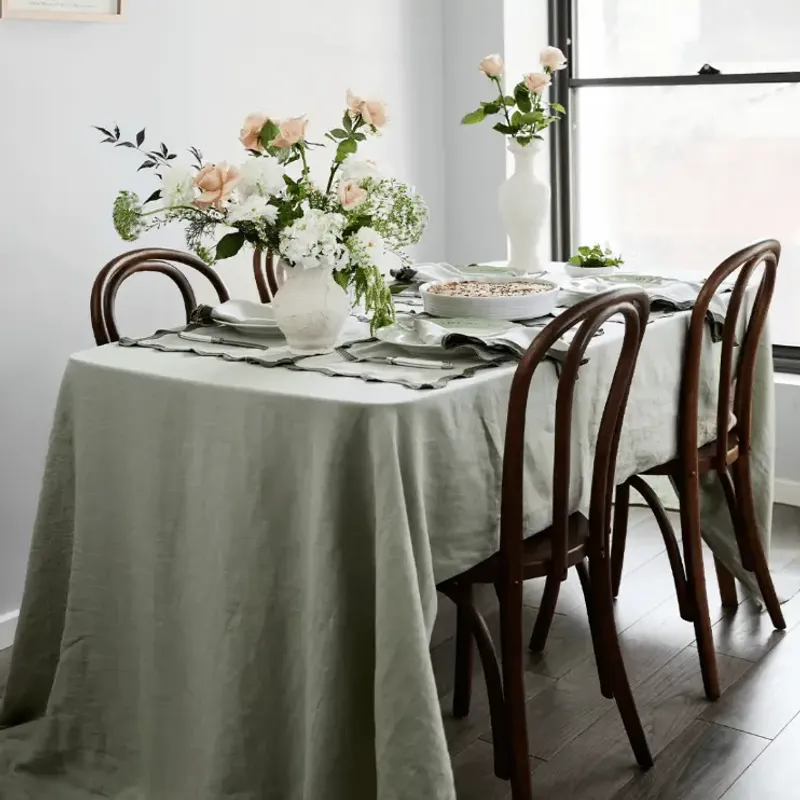
Beautiful linens instantly elevate any meal from ordinary to special occasion status. Quality fabrics like linen or cotton feel luxurious and improve with age and washing.
Having several sets allows for easy rotation during cleaning and different looks for various seasons or holidays. Cloth napkins are more environmentally friendly than paper and add sophistication to everyday dining.
The texture and drape of good linens create visual interest even when the table isn’t formally set for company.
15. Open Shelving Display
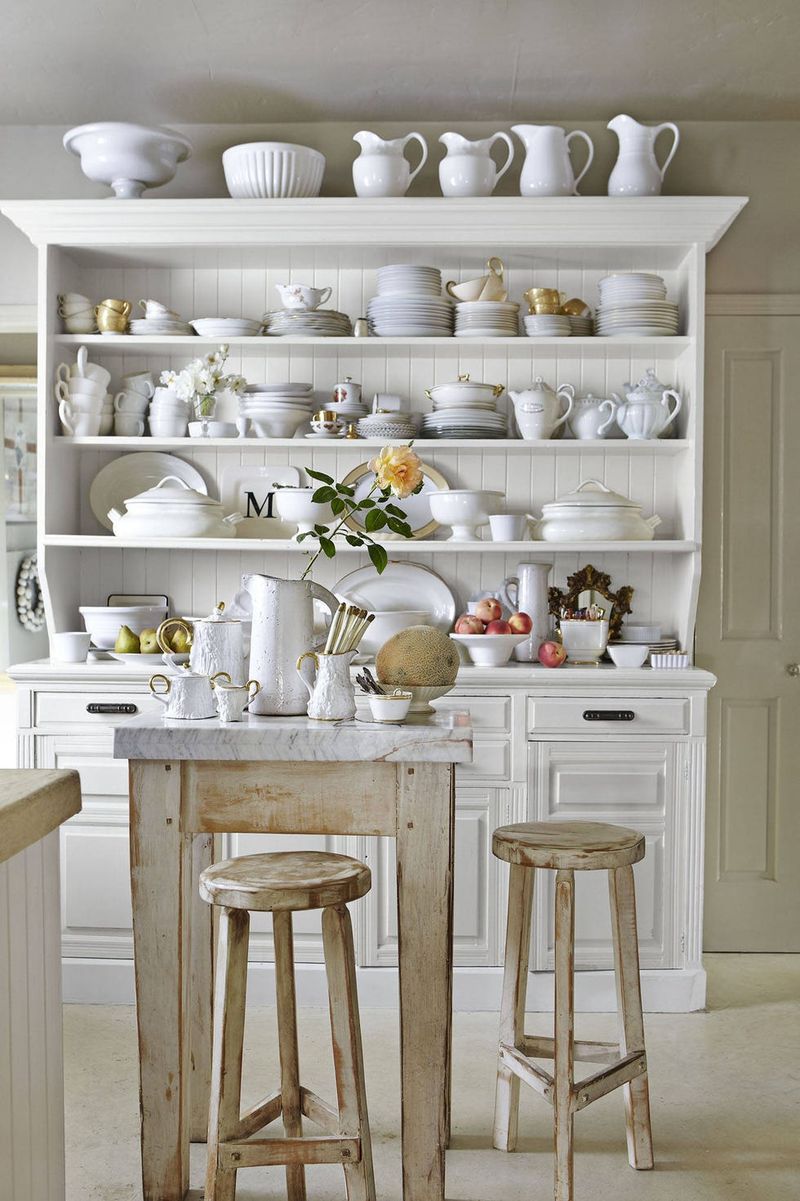
Open shelves showcase your prettiest dishes and serving pieces while keeping them easily accessible for entertaining. This works especially well in smaller spaces where closed cabinets might feel heavy.
The key is curating what you display rather than cramming shelves full of everything you own. Mix functional pieces with decorative objects for visual balance.
Regular editing keeps displays looking intentional rather than cluttered, and seasonal swaps prevent the arrangement from becoming stale or boring.
16. Proper Scale Furniture
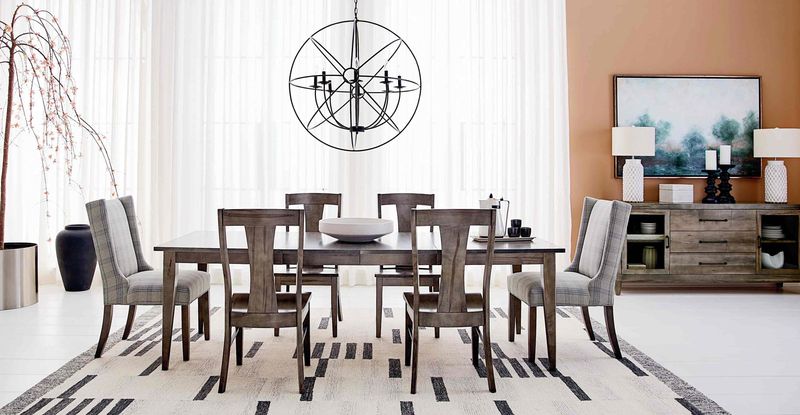
Furniture that fits your room’s proportions creates harmony and ensures comfortable navigation around the space. Tables should allow at least 36 inches of clearance on all sides for chair movement.
Oversized pieces make rooms feel cramped, while tiny furniture gets lost in larger spaces. Measure twice, buy once applies perfectly to dining room purchases.
When in doubt, err slightly smaller rather than larger to maintain good traffic flow and prevent that crowded feeling during gatherings.
17. Personal Collections Display
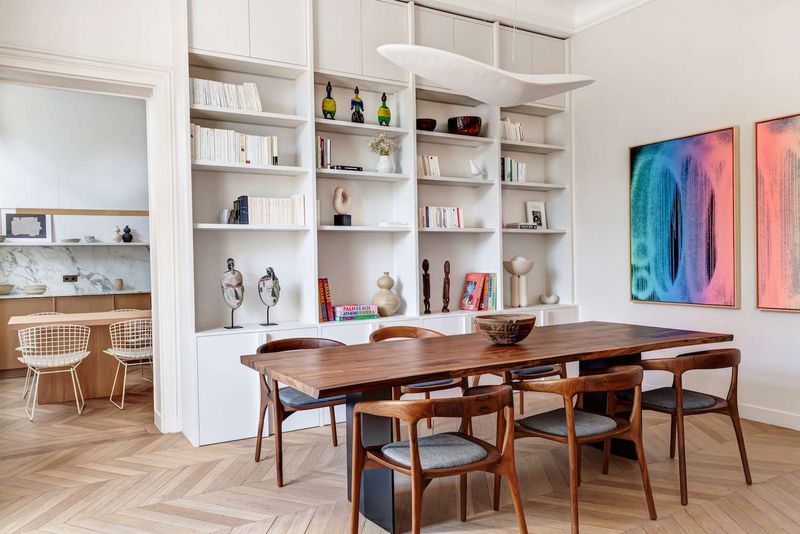
Displaying meaningful collections adds personality that generic decor simply cannot match. Whether it’s vintage pottery, cookbook collections, or family heirlooms, these items tell your unique story.
Group similar items together for maximum impact rather than scattering them throughout the room. This creates intentional vignettes that draw the eye and spark conversations.
Rotate pieces seasonally to keep displays fresh and prevent your favorites from becoming invisible background elements over time.
18. Temperature Control Considerations

Comfortable temperature makes or breaks dining experiences, especially during longer meals or entertaining. Ceiling fans provide gentle air circulation without the noise of portable units.
Consider your room’s orientation and how sunlight affects temperature throughout the day. West-facing rooms might need extra cooling solutions for evening dinners.
Good ventilation also prevents cooking odors from lingering in adjacent open kitchens, keeping your dining space fresh and inviting for guests.
19. Flexible Seating Options
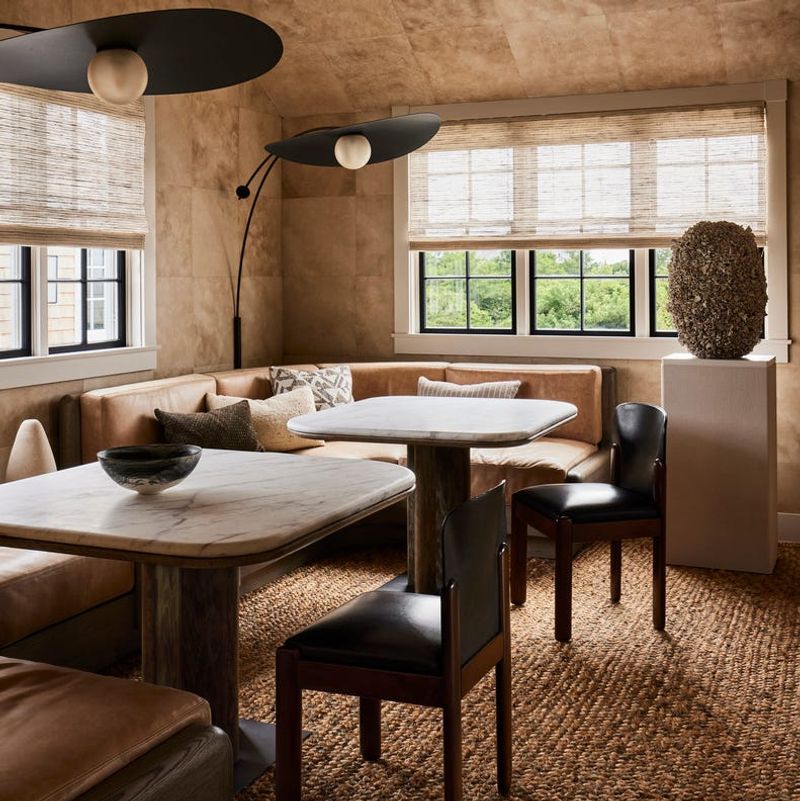
Mixing seating types accommodates different body sizes and dining preferences while adding visual interest to your room. Benches can seat more people when needed but take up less visual space.
Having a few extra folding chairs stored nearby means you’re always ready for unexpected guests or larger holiday gatherings. Different seat heights create a more casual, collected-over-time feeling.
This approach also allows you to replace individual pieces as they wear out rather than entire matching sets.
20. Strategic Color Accents

While neutral bases provide longevity, strategic color injections prevent dining rooms from feeling bland or hotel-like. Choose one or two accent colors that appear in multiple places throughout the space.
This might be the deep blue in your artwork, throw pillows, and a ceramic vase rather than random splashes of different hues everywhere. Repetition creates cohesion and intentionality.
Seasonal swaps of these accent pieces let you refresh your room’s personality without major renovations or expense.

